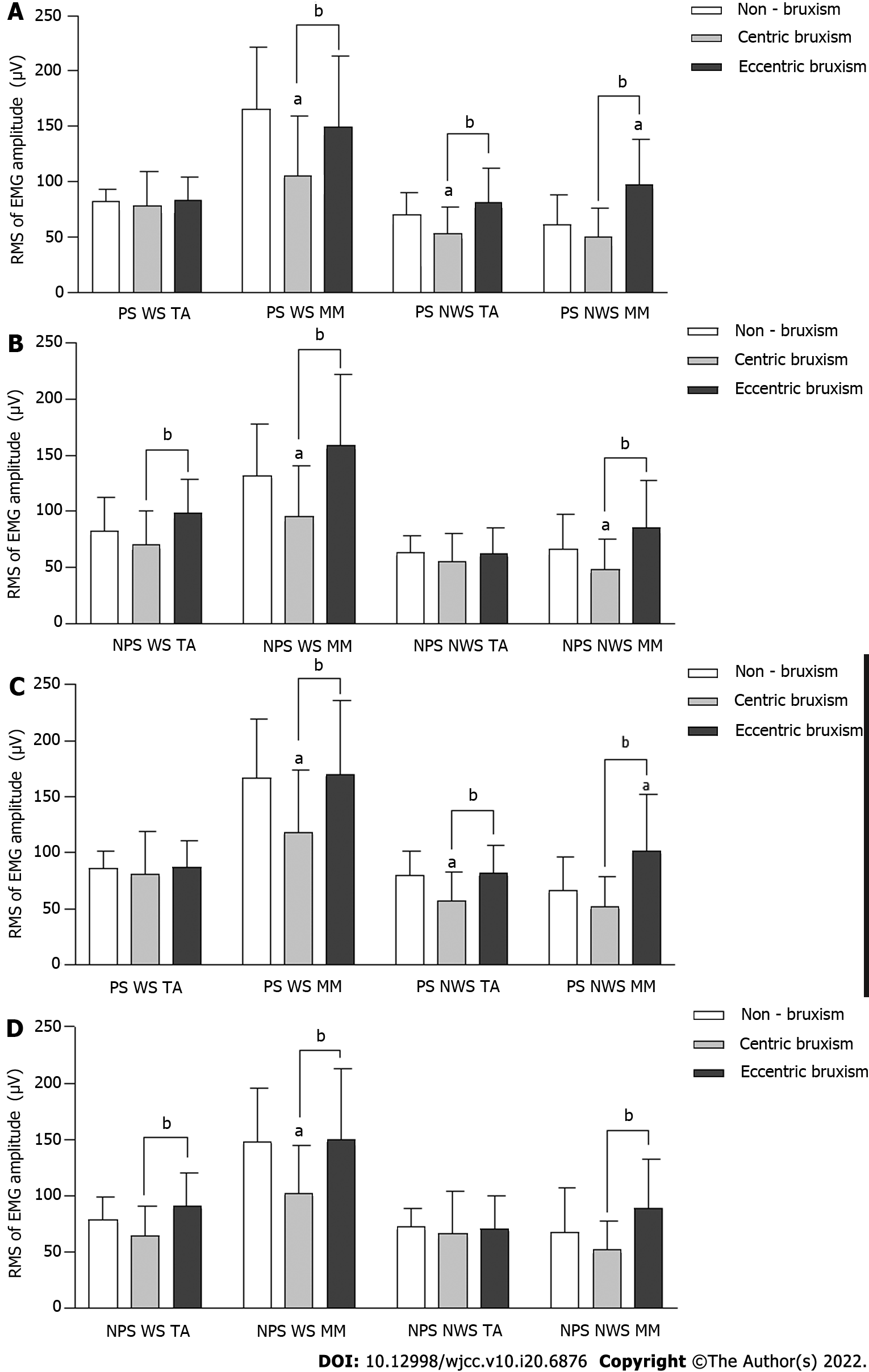Copyright
©The Author(s) 2022.
World J Clin Cases. Jul 16, 2022; 10(20): 6876-6889
Published online Jul 16, 2022. doi: 10.12998/wjcc.v10.i20.6876
Published online Jul 16, 2022. doi: 10.12998/wjcc.v10.i20.6876
Figure 4 Comparison of the electromyography activity (mean ± SD) during unilateral chewing.
A: Comparison of the root mean square (RMS) of electromyography amplitudes of unilateral chewing of candy on the preferred side (PS); B: Comparison of the RMS of electromyography amplitudes of unilateral chewing of candy on the non-PS (NPS); C: Comparison of the RMS of electromyography (EMG) amplitudes of unilateral chewing of almond on the PS; D: Comparison of the RMS of EMG amplitudes of unilateral chewing of almond on the NPS. aComparison to the non-bruxism group, P < 0.05; bComparison to centric bruxism group, P < 0.05. WS: Working side; NWS: Non-working side; TA: Temporalis anterior; MM: Masseter muscle.
- Citation: Lan KW, Jiang LL, Yan Y. Comparative study of surface electromyography of masticatory muscles in patients with different types of bruxism. World J Clin Cases 2022; 10(20): 6876-6889
- URL: https://www.wjgnet.com/2307-8960/full/v10/i20/6876.htm
- DOI: https://dx.doi.org/10.12998/wjcc.v10.i20.6876









